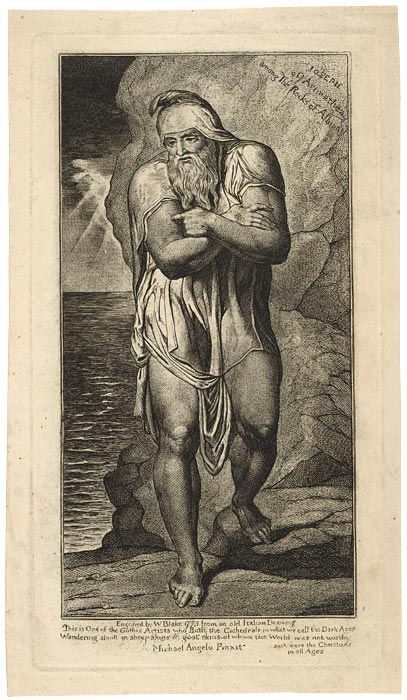
Joseph of Arimathea––the figure who is supposed to have provided Christ's funeral and perhaps later carried the Holy Grail to England––is the patron saint of gravediggers. His story surely spoke to Blake's interest in early English history and religion. He created this engraving in 1773 while still a sixteen-year-old apprentice to James Basire (1730–1802). This is the reworked state, dating from about 1810, when Blake was in his fifties.
I. Engravings
William Blake was tutored by his mother, given drawing lessons at the age of ten, and at fifteen apprenticed to James Basire, one of the most prominent engravers of the day. Seven years later, when the apprenticeship was complete, Blake was admitted to study at the Royal Academy. Because of this solid instruction, he was admired for his craftsmanship and often identified as "Mr. Blake, the engraver." Throughout his life, he maintained that engraving was a true art form: "Painting is Drawing on Canvas & Engraving is drawing on Copper & Nothing Else." Blake's prints demonstrate his strong commitment to line, developed through Basire and enhanced by his own creativity. Fortunately his engraver's training would support him, though not well, for the remainder of his life. At forty-six, he wrote, "I curse & bless Engraving alternately because it takes so much time & is so untractable, tho capable of such beauty & perfection."
